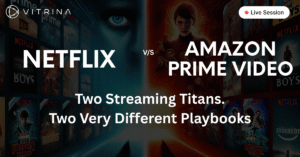The media and entertainment industry remains in a state of evolution, marked by significant shifts in content consumption and distribution methods. In recent developments, Netflix has announced its latest content strategy, focusing on enhancing personalized viewing experiences for its subscribers. This approach aims to leverage advanced algorithms and data analytics to deliver tailored recommendations, thereby keeping audiences engaged and retaining subscriptions.
In parallel, Disney is navigating changes within its streaming platform, with plans to optimize content offerings across its vast library. The company is set to launch several new series and films under the Marvel and Star Wars franchises, capitalizing on their established fan bases to drive viewership. This integration of beloved properties into the streaming landscape is part of Disney’s broader initiative to fortify its competitive edge against rivals like Apple TV+ and Amazon Prime Video.
Furthermore, the ongoing shift towards streaming has prompted traditional cable networks to rethink their strategies. Companies like ViacomCBS are reevaluating their content distribution models to adapt to changing viewer preferences. This includes expanding their digital footprint and creating new partnerships that amplify content reach.
As these industry leaders adapt, the implications for content strategists and producers are profound. The need for innovative approaches to content creation and distribution is more critical than ever, as professionals within the media and entertainment sector seek to navigate this shifting landscape effectively.
Company Names: Netflix, Disney, Marvel, Star Wars, Apple TV+, Amazon Prime Video, ViacomCBS
Disclaimer: This article has been auto-generated from a syndicated RSS feed and has not been edited by Vitrina staff. It is provided solely for informational purposes on a non-commercial basis.
































